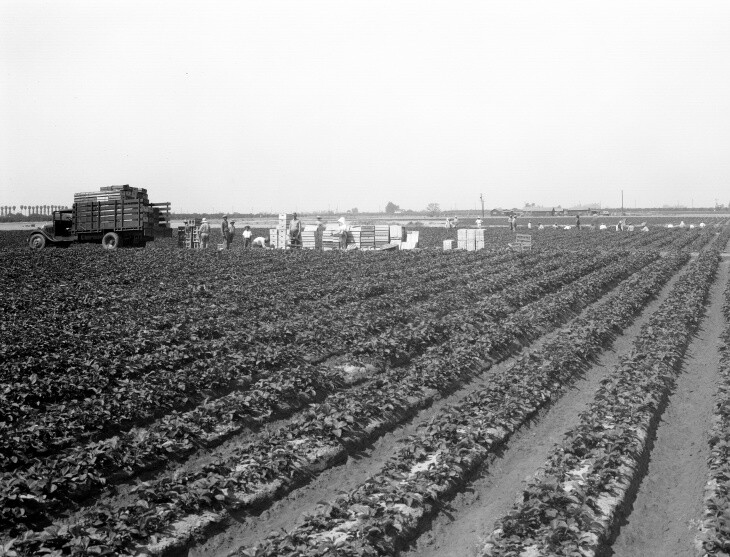Truth matters. Community matters. Your support makes both possible. LAist is one of the few places where news remains independent and free from political and corporate influence. Stand up for truth and for LAist. Make your year-end tax-deductible gift now.
Rarely Seen Photos From Knott's Berry Farm's 99-Year History

Knott's Berry Farm is best known as a theme park, but the 100th anniversary of its humble beginning as an actual berry farm is coming up next year.
"Nobody knows," Knott's historian Eric Lynxwiler said. "It didn't start with roller coasters -- it wasn't even planned."

The Knott's Berry Farm story started when a relative invited Walter and Cordelia Knott to come to Buena Park, according to Lynxwiler. They set up a roadside stand to sell those berries.
Lynxwiler, who co-wrote a book about the history of Knott's Berry Farm, collects photos from throughout the park's past. You can see a sampling of those photos here, along with other retro looks into the park's past.

BEGINNINGS

The Knotts bought the land they were farming when the opportunity came up in 1927. With the land secured, they started to build a more permanent structure than their modest berry stand.
The Knotts started to hit on something when they discovered an experimental berry that had been developed by Rudolph Boysen and later abandoned. Knott produced a bumper crop of the large berries with a unique taste and, rather than taking all the credit for himself, christened them "boysenberries."
Those boysenberries put the Knotts farm on the map. But it's what they did next that turned the farm into a hit in the midst of the Great Depression.

Cordelia had a tea room that served snacks, and it became one of the biggest early draws thanks to a legendary fried chicken Sunday dinner. Those chicken dinners were so popular that people were lining up by the hundreds and even thousands.
"Walter Knott just had so many people coming to his farm in the '30s and '40s that he had to entertain them somehow," Lynxwiler said.
The answer: small "amusements" around his farm.
"He thought, 'If it amused me, it will amuse someone else,'" Lynxwiler said.

A THEME PARK IS BORN
Early attractions included items like an ore car, logging wheels from Northern California, a petrified tree stump, and phosphorescent rocks. Knott also started mixing real items with fantasy -- like claiming that he'd found California's last active volcano and moved it to his farm.

In 1940, the Knotts decided to expand. The next year, the first thing we'd think of as being representative of an actual theme park opened, with Ghost Town making its debut.
The thing that makes it special, Lynxwiler said, is that it's meant to be as vintage and authentic as possible.
"It wasn't a cartoon frontier land," he said.

PRESERVING THE HISTORY
Lynxwiler credits the book he co-authored with Christopher Merritt in 2010 with helping to rejuvenate Knott's Berry Farm.
"I mean, to be quite frank, Knott's was really kind of going downhill," Lynxwiler said.
The park, no longer owned by the Knott family, had been sold to an Ohio amusement park company. The focus had turned to new roller coasters, but Lynxwiler argues that's not the point of Knott's -- as a theme park, it's about the theme.


"They were looking around and going, 'Oh, that's what that is,'" Lynxwiler said.
The thing Lynxwiler loves most about collecting those photos is seeing the "anonymous, nameless guests who are captured in time" attending the park, along with being able to track how the park has changed over the years.

Lynxwiler hopes that the park stays true to its Southern California roots going forward.
"My family's been going there for five generations," Lynxwiler said. "It's just a part of family life to me. You go to Knott's."
He's already getting hyped for the Knott's Boysenberry Festival this spring.
Check out more classic Knott's photos below:










This story has been updated.







